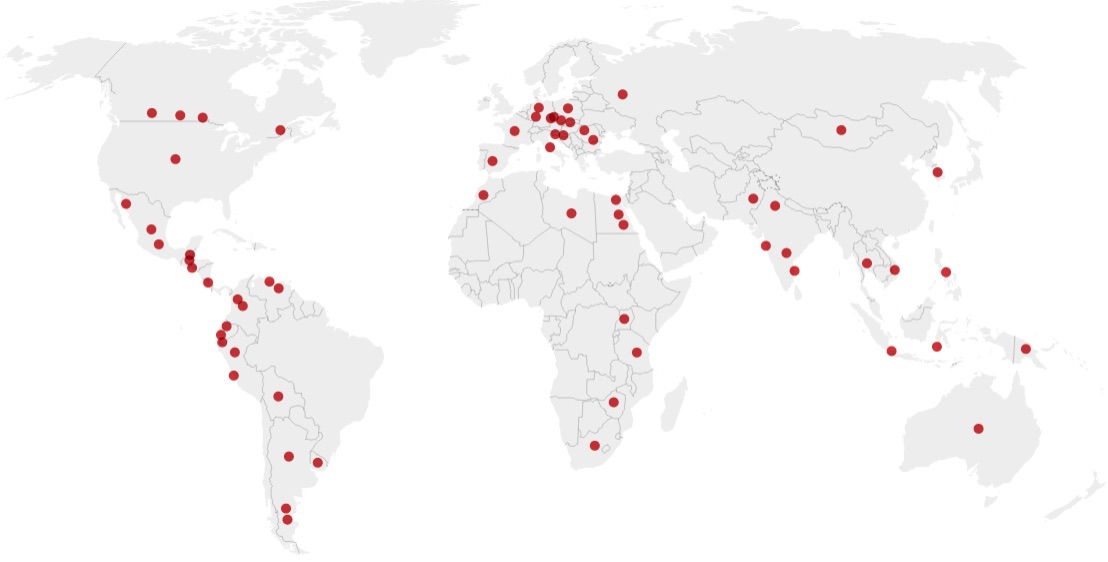
IIED | 21 December 2020
Unpacking regulatory chill: the case of mining in the Santurbán páramo in Colombia
by Anna Sands
Investment treaties are international agreements through which the host state commits to treating investors according to certain standards. They contain broad clauses, for example requiring “fair and equitable treatment” of investors and investments, and investors can sue states in international arbitral tribunals for alleged violations of such standards.
The amounts claimed can be very high; for instance, Colombia currently faces around US$18 billion in investment claims from five gold mining companies. The legal costs of defending such cases are not small, either. They average at around US$5 million. Especially for countries which, like Colombia, are struggling to find funds to deal with the COVID-19 pandemic, these are significant sums.
Policymakers and academics warn that the potentially high cost of losing in investment arbitration can lead to regulatory chill; it can make it more difficult for states, concerned by the risk of claims, to regulate higher environmental or social standards.
The potential legal claims could also affect the balance of negotiations between parties, giving the investor additional leverage: a recent IIED report shows that investor-state dispute settlement (ISDS) could make the transition away from coal slower and more costly, as investors in coal may demand large compensation for shutting down plants.
The need for empirical testing: the Santurbán páramo case
To see whether regulatory chill occurs, we need to test it empirically. Last year, I spent two months doing fieldwork on the case of mining in the Santurbán páramo in Colombia. This ecosystem unique to the Andes is home to significant biodiversity and a key source of fresh water (to find out more about it, see the IIED long read and documentary).
The Santurbán páramo also lies on gold reserves, excavated for centuries by artisanal miners. The civil war in Colombia and the arrival of multinational companies have both led to conflict over the use of the páramo and surrounding areas.
The Santos governments (2010-18) wished to protect the páramos, but multinational mining companies had already started exploration in those areas. The risk was that if they could not continue, they would sue the Colombian state. This is the type of situation in which regulatory chill can happen – the desire to regulate conflicted with potential investment claims.
In 2011, the government prohibited mining in the páramos but made a significant concession to current miners – anyone who already had a mining licence could continue until it expired. The government decision therefore implied partial regulatory chill. This was reversed after a few years; in 2016, a constitutional case brought by citizen groups declared the law to be unconstitutional, and the court ruled that all mining in the páramos should be prohibited, with immediate effect.
Mining companies did in fact bring investment claims. The International Centre for Settlement of Investment Disputes (ICSID) is currently hearing three claims against Colombia challenging the process leading to the prohibition of mining.
The role of the judiciary in preventing regulatory chill
The decision of the government brought about partial regulatory chill, but the court reversed it. The court based its reasoning on constitutional principles, finding that allowing existing mining to continue did not guarantee the rights to a healthy environment, water and to national heritage.
The judges saw their role as safeguarding the long-term interests of the Colombian people and acting as a counterweight to the more short-term perspective inherent to the executive. They had enough independence from the government at the time to put a check on its power.
This shows that to understand regulatory chill we need to analyse how different state actors respond to the risk of claims; we need to unpack the state. The role of the judiciary emerges as particularly important. Where judiciaries are strong and independent, they can conduct constitutional and fundamental rights review of governmental action, especially when the government is under pressure due to the risk of arbitration.
The need to look deeply into the state
The story of Santurbán continues. The process of fixing the boundaries of the páramo is still ongoing. A new company has started exploratory activities in the vicinity, planning a mega-project which would excavate over nine million tons of gold over 25 years (Spanish language site). But the company’s application for a mining licence has recently been archived by the National Authority of Environmental Licences (ANLA) as it found that the environmental consequences of the project were uncertain.
Recently, the Colombian Senate voted to enshrine the ban on all mining in the páramos enshrined in the constitution (Spanish language site) – the proposal is now with the Chamber of Representatives.
The developing situation reinforces the need for analysing the state as a network of actors with diverse incentives, rather than a unitary whole. The decisions of the Senate, the ANLA, as well as other authorities, show that there is no such thing as a unitary state response to the risk of investment claims.
In international law, the state is treated as a whole, and the central state can be held responsible for local authorities, for example. However, this does not reflect the complex and sometimes conflictual processes of decision-making within a state.
A deeper understanding of regulatory chill requires a deeper dive into this web of state actors.
About the author
Anna Sands completed the MPhil in development studies at Oxford University, and this blog is based on her MPhil research, focusing on the impact of ISDS on a state’s policy choices. She is currently trade policy specialist at WWF-UK.


